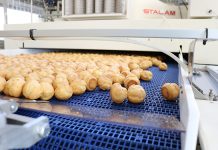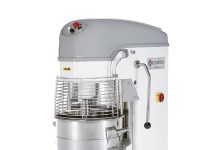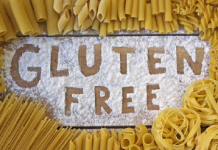
Pavan developed a technology for producing gluten-free pasta that, after cooking, keeps its typical consistency, body and elasticity and does not become gummy, as was the case in the past.
Gluten-free materials, like rice or corn flour pasta, experience a progressive yearly increase in market shares (approximately 0.2% in volume) – though insignificant compared to those of dry durum wheat pasta – deriving both from the growing number of people affected by coeliac disease, steadily increasing over the past 20 years, and the even greater spreading of consumers with health-based life styles. In addition, many geographical areas have a significant local production of corn, rice, sorghum, millet and other cereals of interest from the nutritional and technological point of view; pasta production from such cereals increases their added value and solves the problem of their preservability, not a minor one in Countries, where the food chain is not well organized and is based on low-level technology.

The main technological problem in producing gluten-free pasta is precisely the lack of gluten, the perfect structuring agent of traditional, durum wheat pasta. In fact, the structure created by the presence of gluten in traditional pasta contributes to retain the starch, preventing the loss of solids during cooking so that pasta reaches its typical consistency and body. If this structure is not present, the starch is no longer retained and dissolves in water, obtaining a gummy pasta. For a long time, gluten-free pastas paid the price of their lack of texture and consistency after cooking. Adequate recipes using pre-gelatinized flours, also chemically modified, or containing texturing additives, allowed considerable improvements of the quality, but little has been done to optimise machines and processing systems for these specific products.
Pavan’s choice
Already since the late ‘1980s, Pavan – a company based in Veneto and a worldwide leader in the design and engineering of technologies and lines for traditional (long, short and nest-shaped pasta) pasta – had developed a process for the production of gluten-free pasta from local raw materials. The process envisaged a first hydration phase, followed by a thermal treatment phase with steam injection, and a final phase, where the extrusion screw was fed under vacuum. Each phase took place in a mixing tank connected to the next one by short sealing screws that allowed vacuum to be kept in the last tank. This process has been rationalized transforming it into a hydrothermal treatment that can be integrated onto existing traditional pasta lines, turning them into lines suitable for gluten-free pasta; it is ideal for capacities of over 500 kg/h. Often, however, the hourly production demands for these special pastas are quite low, and the focus is on the variety of formats produced, including long and short pasta, on the same machine. This means setting up plants with static or semi-static drying and with a flexible press, suitable for dough cooking and forming of short and long pasta, as well as capable of producing excellent quality pasta using under vacuum extrusion, while all working parameters are monitored in automatic.

Compact PST presses
In order to meet these requirements, Pavan has designed a family of compact presses called PST. They are characterized by a single tank, preceded by a fast pre-mixer for a first hydration phase, where the dough is cooked with injected steam. From this tank, a variable speed extraction screw feeds directly the extrusion screw. The vacuum, very important in order to ensure the look and quality in cooking even for these non traditional pastas, is created between the extraction screw of the steaming tank and the extrusion screw. Given the special rheological properties of this type of dough, the extrusion screw is slightly different in design from the standard screw used for durum wheat pasta. Finally, the head is hinged to the machine so it can be easily opened up for cleaning. The hinged head solution also allows to have on the same machine the short and the long past head with a minimum distance between the extrusion screw and the pasta die, a very critical area for these gelatinized mixes.




WE OPERATE VARIOUS FARMER’S MARKETS WHERE WE SELL FRESH LOCALLY MADE PASTA AND GLUTEN FREE DRY PASTA MADE BY LE VNIZIANE. WE WOULD LIKE TO EXPLORE MAKING OUR OWN GLUTEN FREE PASTA FROM CORN AS PRODUCED BY LE VENIZIANE. COULD YOU PLEASE SEND ME INFORMATION AS TO WHAT MACHINES YOU WOULD RECCOMEND TO SET UP A MANUFACTURING FACILITY IN THE SOUTH WEST FLORIDA AREA.
VERY TRULY YOURS,
FRANCIS T LOMBARDI
ANGELA’S GOURMET PASTA, LLC
I am looking for short past production line from a to
Z with 2ton /hour
Comments are closed.